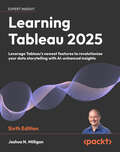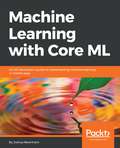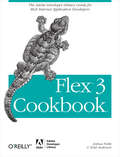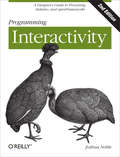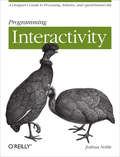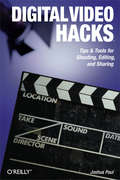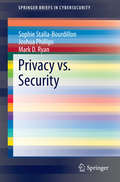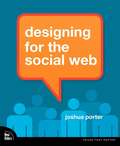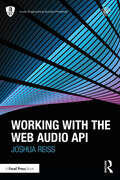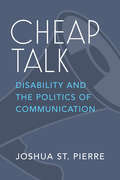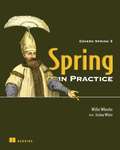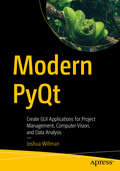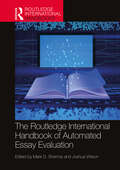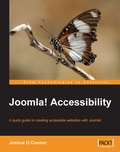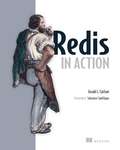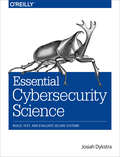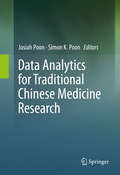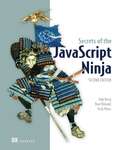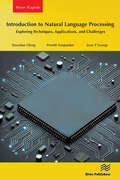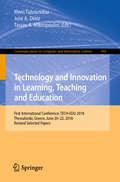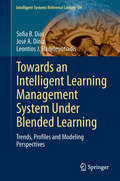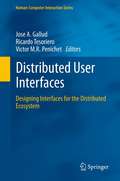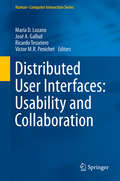- Table View
- List View
Learning Tableau 2024: Master Tableau's newest features to revolutionize your data storytelling with AI-enhanced insights
by Joshua N. MilliganExplore the full potential of Tableau and learn how to draw valuable insights from data directly from a Tableau Visionary (Zen Master). Purchase of the print or Kindle book includes a free PDF ebook.Key FeaturesExplore the new Tableau AI features including Tableau Pulse, Tableau Agent, and other AI enhancements enabling machine learning, GPT, and NLPTransform complex datasets into interactive insights using new features of the Tableau data model and Tableau PrepGain deeper insights with geospatial analysis, scripting extensions, and other advanced methodsBook Description"Learning Tableau 2024" marks a new era in data visualization and analysis, bringing together advanced AI integrations and dynamic user experiences. This sixth edition, authored by Tableau Visionary (Zen Master) Joshua Miligan, is your comprehensive guide to mastering the latest innovations in Tableau that transform raw data into actionable insights. This edition introduces groundbreaking features like Tableau AI (including Tableau Pulse and Tableau Agent), enhancing your analytical capabilities with AI-driven data exploration and automated insights. With detailed walkthroughs, you’ll learn to build dynamic dashboards that respond to your data in real time and delve into sophisticated AI functionalities that predict trends and model scenarios. Whether you're a seasoned data professional or new to Tableau, this book provides the tools you need to leverage Tableau’s full potential. From integrating diverse data sources using the enhanced Data Model to employing advanced geospatial functions for detailed mapping, every chapter is packed with expert knowledge and practical applications designed to put powerful analytics at your fingertips.What you will learnImplement advanced AI features to streamline data analysisBuild and customize dynamic dashboards for interactive data storytellingLeverage new geospatial functions for comprehensive mappingEnhance data prep with Tableau Prep's new featuresIntegrate and analyze data from multiple sources effectivelyWho this book is forThis Tableau book is for aspiring BI developers and data analysts, data scientists, researchers, and anyone else who wants to gain a deeper understanding of data through Tableau. This book starts from the ground up, so you won't need any prior experience with Tableau before you dive in, but a full Tableau license (or 14-day demo license) is essential to be able to make use of all the exercises.
Machine Learning with Core ML: An iOS developer's guide to implementing machine learning in mobile apps
by Joshua NewnhamLeverage the power of Apple's Core ML to create smart iOS appsKey Features Explore the concepts of machine learning and Apple’s Core ML APIs Use Core ML to understand and transform images and videos Exploit the power of using CNN and RNN in iOS applicationsBook DescriptionCore ML is a popular framework by Apple, with APIs designed to support various machine learning tasks. It allows you to train your machine learning models and then integrate them into your iOS apps.Machine Learning with Core ML is a fun and practical guide that not only demystifies Core ML but also sheds light on machine learning. In this book, you’ll walk through realistic and interesting examples of machine learning in the context of mobile platforms (specifically iOS). You’ll learn to implement Core ML for visual-based applications using the principles of transfer learning and neural networks. Having got to grips with the basics, you’ll discover a series of seven examples, each providing a new use-case that uncovers how machine learning can be applied along with the related concepts. By the end of the book, you will have the skills required to put machine learning to work in their own applications, using the Core ML APIsWhat you will learnUnderstand components of an ML project using algorithms, problems, and dataMaster Core ML by obtaining and importing machine learning model, and generate classesPrepare data for machine learning model and interpret results for optimized solutionsCreate and optimize custom layers for unsupported layers Apply CoreML to image and video data using CNNLearn the qualities of RNN to recognize sketches, and augment drawingUse Core ML transfer learning to execute style transfer on imagesWho this book is forMachine Learning with Core ML is for you if you are an intermediate iOS developer interested in applying machine learning to your mobile apps. This book is also for those who are machine learning developers or deep learning practitioners who want to bring the power of neural networks in their iOS apps. Some exposure to machine learning concepts would be beneficial but not essential, as this book acts as a launchpad into the world of machine learning for developers.
Flex 3 Cookbook: Code-Recipes, Tips, and Tricks for RIA Developers (Adobe Developer Library)
by Joshua Noble Todd AndersonThe best way to showcase a powerful new technology is to demonstrate its real-world results, and that's exactly what this new Cookbook does with Adobe Flex 3. Wide ranging and highly practical, Flex 3 Cookbook contains more than 300 proven recipes for developing interactive Rich Internet Applications and Web 2.0 sites. You'll find everything from Flex basics, to solutions for working with visual components and data access, to tips on application development, unit testing, and using Adobe AIR. You also get ideas from the development community. Through its Flex Cookbook website (www.adobe.com/devnet/), Adobe invited Flex developers to post their own solutions for working with this technology, and from hundreds of posts, the authors chose the best and most useful solutions to supplement Flex 3 Cookbook. Each recipe inside provides a solution to a common problem, explains how and why it works, and offers sample code that you can put to use immediately. Topics include:Containers and dialogues Working with Text Data driven components DataGrid and Advanced DataGrid ItemRenderers and Editors Images, bitmaps, videos, and sounds CSS, styling, and skinning States and effects Working with Collections, arrays, and DataProviders Using DataBinding Validation, formatting, and regular expressions Using Charts and data visualization Services and Data Access Using RSLs and Modules Working with Adobe AIR Whether you're a committed Flex developer or still evaluating the technology, you'll discover how to get quick results with Flex 3 using the recipes in this Cookbook. It's an ideal way to jumpstart your next web application.
Programming Interactivity
by Joshua Noble<p>Want to create rich interactive experiences with your artwork, designs, or prototypes, using electronics and programming? This is the place to start. <i>Programming Interactivity</i> helps you explore common themes using Arduino, Processing, and openFrameworks in interactive art and design, including 2D and 3D graphics, sound, physical interaction, computer vision, geolocation, and more. No programming experience is required to get started.</p>
Programming Interactivity: A Designer's Guide to Processing, Arduino, and Openframeworks
by Joshua NobleMake cool stuff. If you're a designer or artist without a lot of programming experience, this book will teach you to work with 2D and 3D graphics, sound, physical interaction, and electronic circuitry to create all sorts of interesting and compelling experiences -- online and off.Programming Interactivity explains programming and electrical engineering basics, and introduces three freely available tools created specifically for artists and designers:Processing, a Java-based programming language and environment for building projects on the desktop, Web, or mobile phonesArduino, a system that integrates a microcomputer prototyping board, IDE, and programming language for creating your own hardware and controlsOpenFrameworks, a coding framework simplified for designers and artists, using the powerful C++ programming languageBTW, you don't have to wait until you finish the book to actually make something. You'll get working code samples you can use right away, along with the background and technical information you need to design, program, build, and troubleshoot your own projects. The cutting edge design techniques and discussions with leading artists and designers will give you the tools and inspiration to let your imagination take flight.
Programming Interactivity: A Designer's Guide to Processing, Arduino, and openFrameworks
by Joshua NobleReady to create rich interactive experiences with your artwork, designs, or prototypes? This is the ideal place to start. With this hands-on guide, you’ll explore several themes in interactive art and design—including 3D graphics, sound, physical interaction, computer vision, and geolocation—and learn the basic programming and electronics concepts you need to implement them. No previous experience is necessary.You’ll get a complete introduction to three free tools created specifically for artists and designers: the Processing programming language, the Arduino microcontroller, and the openFrameworks toolkit. You’ll also find working code samples you can use right away, along with the background and technical information you need to design, program, and build your own projects.Learn cutting-edge techniques for interaction design from leading artists and designersLet users provide input through buttons, dials, and other physical controlsProduce graphics and animation, including 3D images with OpenGLUse sounds to interact with users by providing feedback, input, or an element they can controlWork with motors, servos, and appliances to provide physical feedbackTurn a user’s gestures and movements into meaningful input, using Open CV
Digital Video Hacks: Tips & Tools for Shooting, Editing, and Sharing (O'Reilly's Hacks Series)
by Joshua PaulSince the dawn of film, novices and experts have used quick-and-dirty workarounds and audiovisual tricks to improve their motion pictures, from home movies to feature films. Today, the tools have certainly changed, as have the quality and scope of the results. With digital video, the hacking possibilities are now limitless, for both amateurs and professional artists. From acquiring footage, mixing, editing, and adding effects to final distribution, Digital Video Hacks provides unique tips, tools, and techniques for every stage of video production. You'll learn how to: Get your projects started right using creative preparation tools and techniques, from making your own steadicam, boom, or dolly to effective storyboarding, timecoding, and tape labeling Troubleshoot common shooting problems, including using stop-motion and time-lapse techniques, lighting effects, colored screens and gels, and household objects to establish mood or otherwise wow an audience Create stunning visual effects, such as satellite zooming, surreal scenes, Matrix-like bullet-time, and green screen illusions Fool your audience with audio tricks, replacing flubbed dialogue, smoothing over cuts, and covering missing audio with room tone Add professional features with post-production tricks, including color correction, soundtrack cleanup, opening sequences, and DVD bookmarks Distribute final content in a variety of creative ways, from exporting to basic videotape or DVD to streaming over the internet or even via cell phone Use the web to provide interactivity and dynamic content, attend a remote conference, or vlog your life. Whether you're looking for a new technique to include in your next project, a solution to a common problem, or just a little inspiration, this book reintroduces you to the digital video you only thought you knew.
Privacy vs. Security
by Sophie Stalla-Bourdillon Joshua Phillips Mark D. RyanSecuring privacy in the current environment is one of the great challenges of today's democracies. Privacy vs. Security explores the issues of privacy and security and their complicated interplay, from a legal and a technical point of view. Sophie Stalla-Bourdillon provides a thorough account of the legal underpinnings of the European approach to privacy and examines their implementation through privacy, data protection and data retention laws. Joshua Philips and Mark D. Ryan focus on the technological aspects of privacy, in particular, on today's attacks on privacy by the simple use of today's technology, like web services and e-payment technologies and by State-level surveillance activities.
Hash Crack: Password Cracking Manual (V3 Series)
by Joshua PicoletThe Hash Crack: Password Cracking Manual v3 is an expanded reference guide for password recovery (cracking) methods, tools, and analysis techniques. A compilation of basic and advanced techniques to assist penetration testers and network security professionals evaluate their organization's posture. The Hash Crack manual contains syntax and examples for the most popular cracking and analysis tools and will save you hours of research looking up tool usage. It also includes basic cracking knowledge and methodologies every security professional should know when dealing with password attack capabilities. Hash Crack contains all the tables, commands, online resources, and more to complete your cracking security kit. This version expands on techniques to extract hashes from a myriad of operating systems, devices, data, files, and images. Lastly, it contains updated tool usage and syntax for the most popular cracking tools.
Designing for the Social Web
by Joshua PorterWith tons of examples from real-world interfaces and a touch of the underlying social psychology theory, Joshua Porter shows you how to design your next great social web application.
Working with the Web Audio API (Audio Engineering Society Presents)
by Joshua ReissWorking with the Web Audio API is the definitive and instructive guide to understanding and using the Web Audio API. The Web Audio API provides a powerful and versatile system for controlling audio on the Web. It allows developers to generate sounds, select sources, add effects, create visualizations and render audio scenes in an immersive environment. This book covers all essential features, with easy to implement code examples for every aspect. All the theory behind it is explained, so that one can understand the design choices as well as the core audio processing concepts. Advanced concepts are also covered, so that the reader will gain the skills to build complex audio applications running in the browser. Aimed at a wide audience of potential students, researchers and coders, this is a comprehensive guide to the functionality of this industry-standard tool for creating audio applications for the web.
Cheap Talk: Disability and the Politics of Communication (Corporealities: Discourses Of Disability)
by Joshua St. PierreIn Cheap Talk: Disability and the Politics of Communication, Joshua St. Pierre flips the script on communication disability, positioning the unruly, disabled speaker at the center of analysis to challenge the belief that more communication is unquestionably good. Working with Gilles Deleuze’s suggestion that “[w]e don’t suffer these days from any lack of communication, but rather from all the forces making us say things when we’ve nothing much to say,” St. Pierre brings together the unlikely trio of the dysfluent speaker, the talking head, and the troll to show how speech is made cheap—and produced and repaired within human bodies—to meet the inhuman needs of capital. The book explores how technologies, like social media and the field of speech-language pathology, create smooth sites of contact that are exclusionary for disabled speakers and looks to the political possibilities of disabled voices to “de-face” the power of speech now entwined with capital.
Spring in Practice
by Joshua White Willie WheelerSummarySpring in Practice shows you how to tackle the challenges you face when you build Spring-based applications. The book empowers software developers to solve concrete business problems by mapping application-level issues to Spring-centric solutions. It diverges from other cookbooks because it presents the background you need to understand the domain in which a solution applies before it offers the specific steps to solve the problem. About this BookSpring in Practice covers 66 Spring development techniques and the practical issues you will encounter when using them. The book starts with three carefully crafted introductory chapters to get you up to speed on the fundamentals. And then, the core of the book takes you step-by-step through the important, practical techniques you will use no matter what type of application you're building. You'll hone your Spring skills with examples on user accounts, security, NoSQL data stores, and application integration. Along the way, you'll explore Spring-based approaches to domain-specific challenges like CRM, configuration management, and site reliability.What's InsideCovers Spring 3Successful outcomes with integration testingDozens of web app techniques using Spring MVCPractical examples and real-world contextHow to work effectively with dataEach technique highlights something new or interesting about Spring and focuses on that concept in detail. This book assumes you have a good foundation in Java and Java EE. Prior exposure to Spring Framework is helpful but not required.Purchase of the print book includes a free eBook in PDF, Kindle, and ePub formats from Manning Publications.About the AuthorsWillie Wheeler is a Principal Applications Engineer with 16 years of experience in Java/Java EE and Spring Framework. Joshua White is a Solutions Architect in the financial and health services industries. He has worked with Spring Framework since its inception in 2002.Table of ContentsIntroducing Spring: the dependency injection containerData persistence, ORM, and transactionsBuilding web applications with Spring Web MVCBasic web formsEnhancing Spring MVC applications with Web FlowAuthenticating usersAuthorizing user requestsCommunicating with users and customersCreating a rich-text comment engineIntegration testingBuilding a configuration management databaseBuilding an article-delivery engineEnterprise integrationCreating a Spring-based "site-up" framework
Modern PyQt: Create GUI Applications for Project Management, Computer Vision, and Data Analysis
by Joshua WillmanDive into GUI application development and create useful applications for practical and relevant topics in the fields of business, computer science, and research. This book uses a realistic approach to help get you started designing and building the applications you need while learning new tools along the way. PyQt has a vast collection of tools that you can use to create GUIs, many of which seem to go unexplored. In Modern PyQt, you will go beyond some of the fundamental topics of GUI development in order to begin building useful desktop applications. Through extensive examples and hands-on projects, you will explore how to make applications for data analysis and visualization using graphs, computer vision with OpenCV and PyQt, the basics of networking, handling databases with SQL, and more! Whether you are looking for new ideas to practice your skills as a programmer or you have a specific goal in mind and need some help to get your ideas off the ground, there is something in Modern PyQt for you!What You Will LearnCreate cross-platform GUIs with Python and PyQt.Understand the important PyQt classes, widgets, and concepts needed for building interactive and practical applications. Find out how to embed useful Python modules into your applications to create more advanced GUIs. Build useful applications that you can improve or make into something completely new with Python and PyQt. Who This Book Is ForIntermediate level programmers or above in Python. GUI developers with some experience designing GUIs. Even if they have never used PyQt before, the concepts learned from other toolkits, such as Tkinter or wxPython, can be carried over for developing applications with using PyQt.
The Routledge International Handbook of Automated Essay Evaluation (Routledge International Handbooks)
by Joshua Wilson Mark D. ShermisThe Routledge International Handbook of Automated Essay Evaluation (AEE) is a definitive guide at the intersection of automation, artificial intelligence, and education. This volume encapsulates the ongoing advancement of AEE, reflecting its application in both large-scale and classroom-based assessments to support teaching and learning endeavors.It presents a comprehensive overview of AEE's current applications, including its extension into reading, speech, mathematics, and writing research; modern automated feedback systems; critical issues in automated evaluation such as psychometrics, fairness, bias, transparency, and validity; and the technological innovations that fuel current and future developments in this field. As AEE approaches a tipping point of global implementation, this Handbook stands as an essential resource, advocating for the conscientious adoption of AEE tools to enhance educational practices ethically. The Handbook will benefit readers by equipping them with the knowledge to thoughtfully integrate AEE, thereby enriching educational assessment, teaching, and learning worldwide.Aimed at researchers, educators, AEE developers, and policymakers, the Handbook is poised not only to chart the current landscape but also to stimulate scholarly discourse, define and inform best practices, and propel and guide future innovations.
Joomla! Accessibility
by Joshue O ConnorThis is a practical book that contains many step-by-step examples for the reader to get their teeth into. Primarily, the book is designed to help the reader gain a deeper understanding of Joomla! and accessibility, but it can also be read as an introduction to assistive technology, disability, and the diversity of user requirements. The book also attempts to de-mystify accessibility and take it off the theoretical platform and firmly root it in the real world with tangible benefits for users of Joomla!. This book is a guide to any Joomla! user who wants to make their sites more accessible and the author does assume that you have a basic working knowledge of Joomla!. You don't need to know anything about accessibility -- the author tells you all that you need to know to make your Joomla! sites accessible to the widest audience. While some design skills and technical knowledge of HTML, CSS and PHP will be very useful you will still benefit from reading this book if you wish to understand more about assistive technology and the needs of people with disabilities. The book is distilled from years of hands on experience that the author has as a web developer and also working with people with disabilities.
Redis in Action
by Josiah CarlsonSummaryRedis in Action introduces Redis and walks you through examples that demonstrate how to use it effectively. You'll begin by getting Redis set up properly and then exploring the key-value model. Then, you'll dive into real use cases including simple caching, distributed ad targeting, and more. You'll learn how to scale Redis from small jobs to massive datasets. Experienced developers will appreciate chapters on clustering and internal scripting to make Redis easier to use.About the TechnologyWhen you need near-real-time access to a fast-moving data stream, key-value stores like Redis are the way to go. Redis expands on the key-value pattern by accepting a wide variety of data types, including hashes, strings, lists, and other structures. It provides lightning-fast operations on in-memory datasets, and also makes it easy to persist to disk on the fly. Plus, it's free and open source.About this bookRedis in Action introduces Redis and the key-value model. You'll quickly dive into real use cases including simple caching, distributed ad targeting, and more. You'll learn how to scale Redis from small jobs to massive datasets and discover how to integrate with traditional RDBMS or other NoSQL stores. Experienced developers will appreciate the in-depth chapters on clustering and internal scripting.Written for developers familiar with database concepts. No prior exposure to NoSQL database concepts nor to Redis itself is required. Appropriate for systems administrators comfortable with programming.Purchase of the print book includes a free eBook in PDF, Kindle, and ePub formats from Manning Publications.What's InsideRedis from the ground upPreprocessing real-time dataManaging in-memory datasetsPub/sub and configurationPersisting to diskAbout the AuthorDr. Josiah L. Carlson is a seasoned database professional and an active contributor to the Redis community.Table of ContentsPART 1 GETTING STARTEDGetting to know RedisAnatomy of a Redis web applicationPART 2 CORE CONCEPTSCommands in RedisKeeping data safe and ensuring performanceUsing Redis for application supportApplication components in RedisSearch-based applicationsBuilding a simple social networkPART 3 NEXT STEPSReducing memory useScaling RedisScripting Redis with Lua
Essential Cybersecurity Science: Build, Test, and Evaluate Secure Systems
by Josiah DykstraIf you’re involved in cybersecurity as a software developer, forensic investigator, or network administrator, this practical guide shows you how to apply the scientific method when assessing techniques for protecting your information systems. You’ll learn how to conduct scientific experiments on everyday tools and procedures, whether you’re evaluating corporate security systems, testing your own security product, or looking for bugs in a mobile game.Once author Josiah Dykstra gets you up to speed on the scientific method, he helps you focus on standalone, domain-specific topics, such as cryptography, malware analysis, and system security engineering. The latter chapters include practical case studies that demonstrate how to use available tools to conduct domain-specific scientific experiments.Learn the steps necessary to conduct scientific experiments in cybersecurityExplore fuzzing to test how your software handles various inputsMeasure the performance of the Snort intrusion detection systemLocate malicious “needles in a haystack” in your network and IT environmentEvaluate cryptography design and application in IoT productsConduct an experiment to identify relationships between similar malware binariesUnderstand system-level security requirements for enterprise networks and web services
Data Analytics for Traditional Chinese Medicine Research
by Josiah Poon Simon K. PoonThis contributed volume explores how data mining, machine learning, and similar statistical techniques can analyze the types of problems arising from Traditional Chinese Medicine (TCM) research. The book focuses on the study of clinical data and the analysis of herbal data. Challenges addressed include diagnosis, prescription analysis, ingredient discoveries, network based mechanism deciphering, pattern-activity relationships, and medical informatics. Each author demonstrates how they made use of machine learning, data mining, statistics and other analytic techniques to resolve their research challenges, how successful if these techniques were applied, any insight noted and how these insights define the most appropriate future work to be carried out. Readers are given an opportunity to understand the complexity of diagnosis and treatment decision, the difficulty of modeling of efficacy in terms of herbs, the identification of constituent compounds in an herb, the relationship between these compounds and biological outcome so that evidence-based predictions can be made. Drawing on a wide range of experienced contributors, Data Analytics for Traditional Chinese Medicine Research is a valuable reference for professionals and researchers working in health informatics and data mining. The techniques are also useful for biostatisticians and health practitioners interested in traditional medicine and data analytics.
Secrets of the JavaScript Ninja
by Josip MarasSummaryMore than ever, the web is a universal platform for all types of applications, and JavaScript is the language of the web. If you're serious about web development, it's not enough to be a decent JavaScript coder. You need to be ninja-stealthy, efficient, and ready for anything. This book shows you how.Purchase of the print book includes a free eBook in PDF, Kindle, and ePub formats from Manning Publications.About the TechnologyJavaScript is rapidly becoming a universal language for every type of application, whether on the web, on the desktop, in the cloud, or on mobile devices. When you become a JavaScript pro, you have a powerful skill set that’s usable across all these domains.About the BookSecrets of the JavaScript Ninja, Second Edition uses practical examples to clearly illustrate each core concept and technique. This completely revised edition shows you how to master key JavaScript concepts such as functions, closures, objects, prototypes, and promises. It covers APIs such as the DOM, events, and timers. You’ll discover best practice techniques such as testing, and cross-browser development, all taught from the perspective of skilled JavaScript practitioners.What’s InsideWriting more effective code with functions, objects, and closuresLearning to avoid JavaScript application pitfallsUsing regular expressions to write succinct text-processing codeManaging asynchronous code with promisesFully revised to cover concepts from ES6 and ES7About the ReaderYou don’t have to be a ninja to read this book—just be willing to become one. Are you ready?About the AuthorsJohn Resig is an acknowledged JavaScript authority and the creator of the jQuery library. Bear Bibeault is a web developer and author of the first edition, as well as coauthor of Ajax in Practice, Prototype and Scriptaculous in Action, and jQuery in Action from Manning. Josip Maras is a post-doctoral researcher and teacher.Table of ContentsPART 1 - WARMING UPJavaScript is everywhereBuilding the page at runtimePART 2 - UNDERSTANDING FUNCTIONSFirst-class functions for the novice: definitions and arguments Functions for the journeyman: understanding function invocation Functions for the master: closures and scopesFunctions for the future: generators and promisesPART 3 - DIGGING INTO OBJECTS AND FORTIFYING YOUR CODEObject orientation with prototypesControlling access to objectsDealing with collectionsWrangling regular expressionsCode modularization techniquesPART 4 - BROWSER RECONNAISSANCEWorking the DOMSurviving eventsDeveloping cross-browser strategies
Introduction to Natural Language Processing: Exploring Techniques, Applications, and Challenges (River Publishers Series in Rapids in Computing and Information Science and Technology)
by Xiaochun Cheng Preethi Nanjundan Jossy P GeorgeThis book provides a thorough and comprehensive introduction to natural language processing (NLP), a critical field at the intersection of artificial intelligence and computational linguistics. It explores key techniques such as sentiment analysis, which enables the detection of emotional tone in text, machine translation, facilitating the conversion of text between languages, and named entity recognition (NER), which identifies and classifies entities like names, dates, and locations within text data.The book delves into deep learning advancements, particularly the use of neural networks such as transformers and recurrent models, which have revolutionized NLP applications. Readers will gain insights into how these models drive innovations in areas such as text classification, language generation, and speech recognition.In addition to technical concepts, the book also addresses the ethical considerations surrounding NLP, emphasizing the responsible use of AI technologies to mitigate issues like bias, misinformation, and privacy concerns. Practical case studies and real-world examples are included to illustrate how NLP is applied in various sectors, including healthcare, finance, and customer service.This book is an invaluable resource for students, researchers, and industry professionals seeking to understand the foundational concepts, cutting-edge advancements, and broader implications of NLP, equipping them with the knowledge to innovate and apply these technologies effectively in their respective fields.
Technology and Innovation in Learning, Teaching and Education: First International Conference, TECH-EDU 2018, Thessaloniki, Greece, June 20–22, 2018, Revised Selected Papers (Communications in Computer and Information Science #993)
by José A. Diniz Meni Tsitouridou Tassos A. MikropoulosThis book constitutes the thoroughly refereed post-conference proceedings of the First International Conference on Technology and Innovation in Learning, Teaching and Education, TECH-EDU 2018, held in Thessaloniki, Greece, on June 20-22, 2018. The 30 revised full papers along with 18 short papers presented were carefully reviewed and selected from 80 submissions.The papers are organized in topical sections on new technologies and teaching approaches to promote the strategies of self and co-regulation learning (new-TECH to SCRL); eLearning 2.0: trends, challenges and innovative perspectives; building critical thinking in higher education: meeting the challenge; digital tools in S and T learning; exploratory potentialities of emerging technologies in education; learning technologies; digital technologies and instructional design; big data in education and learning analytics.
Towards an Intelligent Learning Management System Under Blended Learning
by Sofia B. Dias José A. Diniz Leontios J. HadjileontiadisWhat are the key channels to change in blended instructional practice as they relate to the use of a learning management system (LMS)? What role LMS users' profiles play in facilitating change in practice? Can we model users' quality of interaction (QoI) with LMS? How inclusiveness and affectiveness could lead to a personalized intelligent LMS (iLMS)? If these questions sound intrinsic to you and to your own experience and circumstance, then this book fits absolutely to you. Here, the term Blended - viewed as a fuzzy concept - is understood as a stepping-stone on the way to the future, to explain the multiple ways human beings think/act/feel of society in the 21st century and to embrace the opportunity of humans to re/co-construct new knowledge through the intermediation role of the technology. Initially, based on an online learning environment' theoretical framework, some current issues of the educational processes in the digital age of Web 2. 0 are analyzed. Then, after exploring the main methodological procedures, characteristic examples of research case studies follow, including LMS users' trends and profiles and modeling of their QoI using fuzzy logic. This book offers useful information that evokes initiatives towards rethinking of the value, efficiency, inclusiveness, affectiveness and personalization of the iLMS-based b-learning environment, both by the educators, the LMS designers and educational policy decision makers.
Distributed User Interfaces
by José A. Gallud Victor M.R. Penichet Ricardo TesorieroThe recent advances in display technologies and mobile devices is having an important effect on the way users interact with all kinds of devices (computers, mobile devices, laptops, tablets, and so on). These are opening up new possibilities for interaction, including the distribution of the UI (User Interface) amongst different devices, and implies that the UI can be split and composed, moved, copied or cloned among devices running the same or different operating systems. These new ways of manipulating the UI are considered under the emerging topic of Distributed User Interfaces (DUIs). DUIs are concerned with the repartition of one of many elements from one or many user interfaces in order to support one or many users to carry out one or many tasks on one or many domains in one or many contexts of use - each context of use consisting of users, platforms, and environments. The 20 chapters in the book cover between them the state-of-the-art, the foundations, and original applications of DUIs. Case studies are also included, and the book culminates with a review of interesting and novel applications that implement DUIs in different scenarios.
Distributed User Interfaces: Usability and Collaboration
by José A. Gallud Ricardo Tesoriero María D. Lozano Víctor M. R. PenichetWritten by international researchers in the field of Distributed User Interfaces (DUIs), this book brings together important contributions regarding collaboration and usability in Distributed User Interface settings. Throughout the thirteen chapters authors address key questions concerning how collaboration can be improved by using DUIs, including: in which situations a DUI is suitable to ease the collaboration among users; how usability standards can be used to evaluate the usability of systems based on DUIs; and accurately describe case studies and prototypes implementing these concerns. Under a collaborative scenario, users sharing common goals may take advantage of DUI environments to carry out their tasks more successfully because DUIs provide a shared environment where the users are allowed to manipulate information in the same space and at the same time. Under this hypothesis, collaborative DUI scenarios open new challenges to usability evaluation techniques and methods. Distributed User Interfaces: Collaboration and Usability presents an integrated view of different approaches related to Collaboration and Usability in Distributed User Interface settings, which demonstrate the state of the art, as well as future directions in this novel and rapidly evolving subject area.
